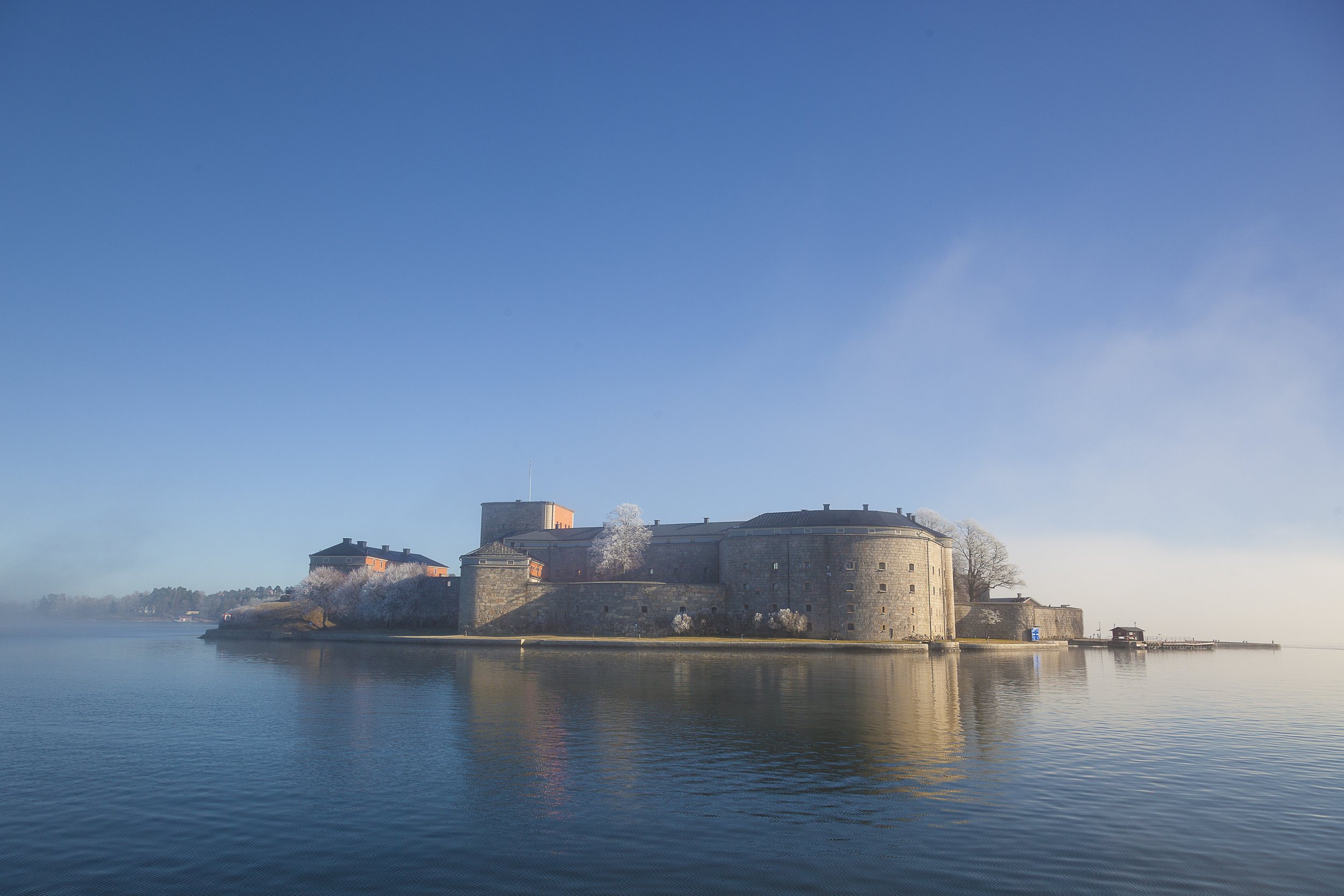
Vaxholms kastell
Life behind the walls
The fact that Vaxholms kastell is located in the middle of the strait between Vaxholm and Rindö is no coincidence. It was one of the two straits where larger ships could pass if they wanted to attack Stockholm. Gustav Vasa already realized this, and in 1560 the first manned fortification was completed on Vaxholmen, the island where Vaxholms kastell is today. It became the foundation of Vaxholm Fortress, the collection of fortifications that together defend Stockholm's inlet. But it was also the start of Vaxholm as a community.
Stockholm's strong defenses
Gustav Vasa's fortress was a three-storey stone tower, armed with cannons. The castle we see today was completed in 1863 and was like its own community in the middle of the strait, with soldiers in training, senior soldiers with families, servants, cooks and craftsmen. The island even had its own shoemaker, fire brigade and mechanical workshop.
The ambition was high - Vaxholms kastell would be Stockholm's strong defense and protection against intruders for a long time to come. The construction took 30 years and was one of the most labor-intensive works ever undertaken in the Stockholm area after Stockholm Castle. In total, around 30,000 tampered granite blocks were used to build the more than two-meter thick outer walls. 150 cannons were placed in bomb-proof vaults on several floors. No one could get past here.
There was just one thing. During the 30 years it took to build the fort, defense technology evolved. Instead of the round-bullet cannons used previously, new fluted fire tubes were introduced. The fluted artillery gave the projectiles a completely different power and accuracy. This had not been taken into account, and when a test firing was carried out against the fortress in 1872, it turned out that the new projectiles went straight through the walls. This meant that the fort had outlived its role as the capital's stronghold - just nine years after its inauguration. Instead, until the 1940s, the fort was used as a staff building, training facility and prison for crown workers.
Serf graybeards
The crown workers, or gray men as they were also called because they always walked around in gray wadding clothes, were vagrants, petty thieves, released prisoners, punished soldiers or other men who did not have a steady income and a home and with whom the state therefore did not really know what to do. Instead of drifting around, they were sentenced to become Crown workers for four years. During this time they received some pay, but in practice they were serfs and prisoners. It was the Crown Workers who got the hardest jobs when the new fort was being built.
In the 1840s, almost 400 men from the Kronoarbetskåren were also stationed on Rindö. This was as many as the entire male population of Vaxholm. There they had to work hard to build roads, quays and bridges. In 1891, the Kronoarbetskåren was moved to Svartsjö forced labor institution on the Mälar Islands and in 1894 it was completely dissolved.
The Ron children play in the West courtyard. The head clerk and Mrs. Premejer look on. The picture was taken in 1880.
A community in the strait
The fort was like a small community in the middle of the strait. It was home to soldiers in training, senior soldiers with their families and servants, as well as civilian workers such as cooks, maids, laundresses, shoemakers, tailors and craftsmen. In the southern donjon there was a fire station and a mechanical workshop. The crown workers lived in the northern donjon. If necessary, up to 1000 people could stay here at the same time, but normally there were about 300-400 people on the island.
The senior soldiers lived a sheltered social life. Families socialized frequently and hosted coffee parties and suppers. Letters from the end of the 19th century depict an idyllic environment. For example, 17-year-old Beata Lagerheim wrote with sadness in her heart about moving away from the beloved fortress;
"Please understand that this is the last letter I write as an officer's daughter in the town of Vaxholm [...] I will never, never be happier".
The fort today
Today there is Vaxholms Fästnings Museum in what was once the West Line. The island also has a restaurant and conference facilities and indoor activities that can be booked by groups all year round. In summer, there are also shops and galleries around the former courtyard. There is also the possibility to stay overnight for those who wish.


